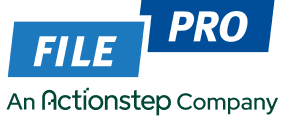On 17 January 2017, I shared these tips with clients after attending a briefing by Boston-based BTI Consulting. Last week one Managing Partner pulled this checklist out from the back of his firm management file. It was dog-eared and notated – and it made my day.
Here are the insights I shared back then which are just as true in these times …
1. Client development is the absolute best source of new business for firms.
In mature, low growth markets competition is dialled up because firms need to win work at the expense of others. The largest firms are redirecting marketing expenditure away from activities like events and sponsorships and spending around one-third of their total marketing/BD budget on Client Development activities like independent in-depth client feedback – the most effective activity for revenue growth.
Other initiatives include client-specific training, multiple annual client visits, preparing research or original content, and funding ‘Top 25’ client teams and their activities. And because big firms have a greater need for revenue growth, their client development activities are more formalised, disciplined (measured) and regular. Client Development is a key performance measure-valued in the same way as financial performance metrics.
2. Alternative fee arrangements aren’t ‘innovative’.
Fee arrangements that are an alternative to hourly rates aren’t innovative. They are a straight forward economic response to changes in the demand-side. But many, many buyers (especially smaller organisations) like the hourly rate. They understand it and they trust it.
My advice is to have a kit of fee structures you can manage such as tiered rates, hybrid structures, fixed fees, success fees and retainers then use the most appropriate fee arrangement (AFA).
3. A common challenge for firm leadership is redirecting funds to fewer but higher-value projects.
Linking activity to revenue growth certainly helps meet this challenge. If you’re tracking client intake then you’ll know what activities have the most impact on growth.
Perhaps you’ve found pre-emptive pitches for new business use, or your referral network is humming, or that snazzy function you held each year cracked open new opportunities.
The challenge is how to implement activities that will drive growth …
4. Start by mapping your practices
Take a leaf from this adaption of the Growth-Share Matrix and assess your firm’s portfolio of practices according to (1) Growth prospects and (2) Relative fee rates.
1. Priority practices – high relative fee rates + high potential for growth
2. Tactical practices – average to low relative fee rates + high potential for growth
3. Opportunistic practices – high relative fee rates but with no growth potential (or decline)
4. Cornerstone practices – low relative fees and no growth potential (or decline).
And then apply these 7 tactics for taking market share
1. Concentrate on Key Account Plans: Have a marketing plan for each major client or major referrer. Start with those who contributed the top 50% of your total fees in the past year. Critique your clients (keep that bit to yourself!) and get feedback from them. And make sure each plan identifies the key risks that the client faces and the key result areas of decision-makers.
2. Act on Client Feedback. Install a regular program of client listening and large-scale use of independent client feedback (dozens to hundreds of client listening points) and let this drive client development plans.
3. Adopt a ‘One size fits one’ approach to client development. Each client will have unique demands for service and style, metrics and measures. So take a ‘concierge-level approach and create custom-designed strategies, client and team education, process design and services delivery.
4. Be selective with BD Skills training and coaching: Provide BD skills training and coaching for high potentials only – invest in those professionals willing and able to deliver.
5. Do one thing that is relevant and memorable in your market. Create one piece of original content and use it as a marquee messaging vehicle for the firm.
6. Dive into the data: Analyse client types and buyer profiles, fees and matters, feedback and workflows – look for opportunities and recommend improvements to process.
7. Empower Partners to commit to the firm. If you’re going to play the pre-emptive pitch or AFA game have clear protocols and processes on the matter and client-specific bases so Partners can commit at the time of negotiation.
Get in touch if you’d like to find out more.
Further Insights
- BTI’s 60 minute presentation is available on You Tube. and www.bticonsulting.com .
- BTI (2017) Preparing Your Firm For Systematic Objective Client Feedback
- BTI (2020) Clients Single Out 70 Law Firms Best at AFAs – and why
- Reeves, M ; Moose, S & Venema T (2014) BCG Classics Revisited: the Growth Share Matrix
- Prodonovich (2015) How To Build A Successful Client Listening Program
About the author:
Sue-Ella is the Principal of Prodonovich Advisory, a business dedicated to helping professional services firms sharpen their business development practices, and attract and retain good clients. She is also on the Executive of CLEAA.
© Prodonovich Advisory. Shared with permission. The original article can be viewed here.

